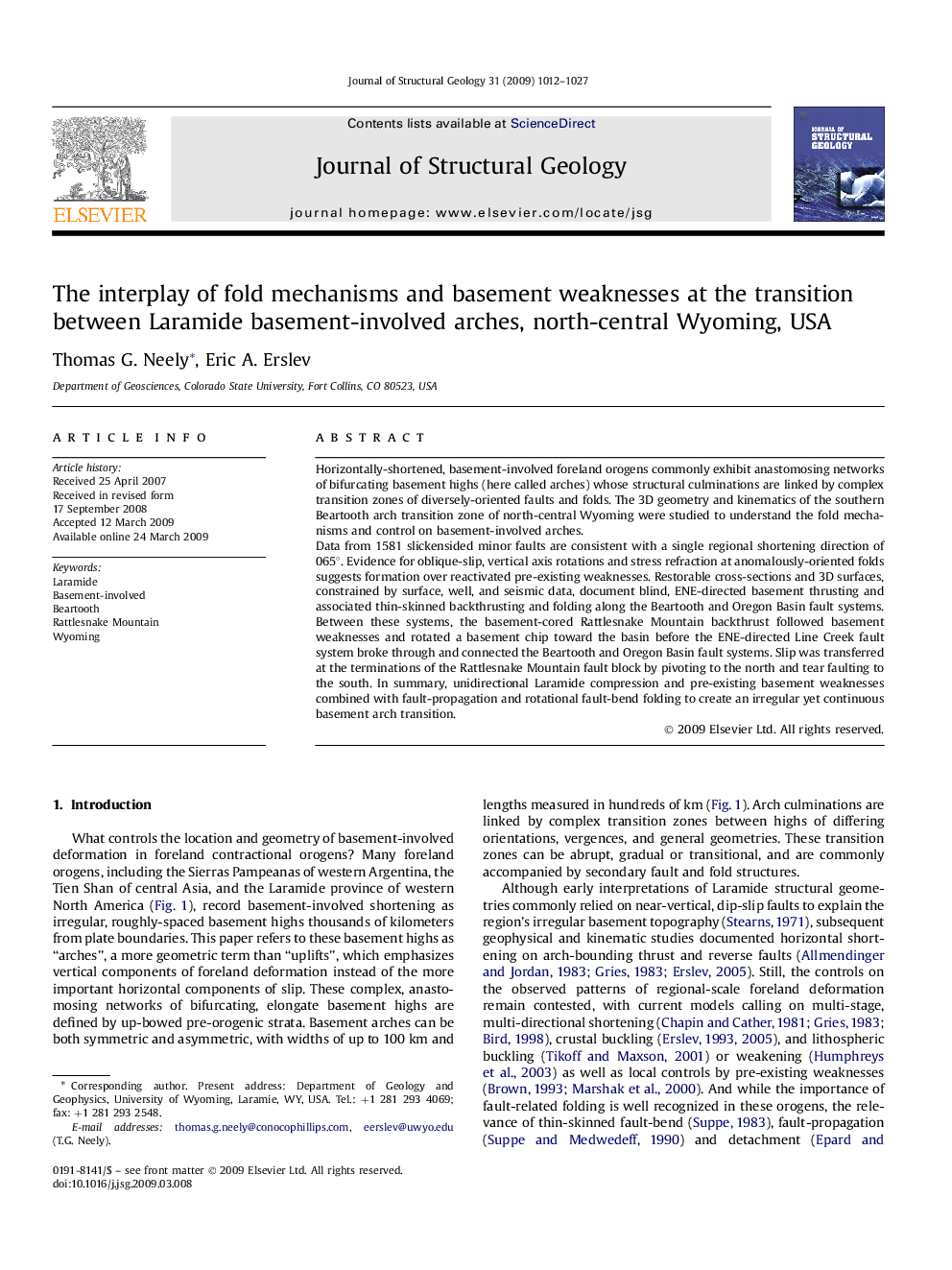| Article ID | Journal | Published Year | Pages | File Type |
|---|---|---|---|---|
| 4734213 | Journal of Structural Geology | 2009 | 16 Pages |
Abstract
Data from 1581 slickensided minor faults are consistent with a single regional shortening direction of 065°. Evidence for oblique-slip, vertical axis rotations and stress refraction at anomalously-oriented folds suggests formation over reactivated pre-existing weaknesses. Restorable cross-sections and 3D surfaces, constrained by surface, well, and seismic data, document blind, ENE-directed basement thrusting and associated thin-skinned backthrusting and folding along the Beartooth and Oregon Basin fault systems. Between these systems, the basement-cored Rattlesnake Mountain backthrust followed basement weaknesses and rotated a basement chip toward the basin before the ENE-directed Line Creek fault system broke through and connected the Beartooth and Oregon Basin fault systems. Slip was transferred at the terminations of the Rattlesnake Mountain fault block by pivoting to the north and tear faulting to the south. In summary, unidirectional Laramide compression and pre-existing basement weaknesses combined with fault-propagation and rotational fault-bend folding to create an irregular yet continuous basement arch transition.
Related Topics
Physical Sciences and Engineering
Earth and Planetary Sciences
Geology
Authors
Thomas G. Neely, Eric A. Erslev,
